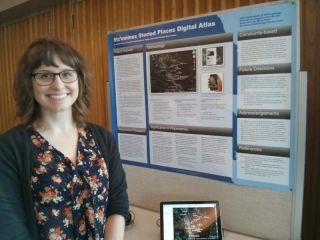“Around the ring” near Geneva
Deep underground near Geneva, Switzerland, the world’s biggest science experiment powered into action again on Nov. 20 with the first full circulation of proton beams making a circuit around the Large Hadron Collider (LHC).
The subterranean action wasn’t only taking place in Europe in the 27-km circular tunnel buried 100 metres underground; it’s been full speed ahead at the University of Victoria since the early 1990s.
The UVic-ATLAS team is responsible for designing and building several crucial components of the ATLAS-Canada detector—the massive “camera” in the LHC for collecting data from the debris of proton collisions, which will help particle physicists explore the origins of mass and probe the possible existence of new space dimensions.
UVic physics professor Dr. Michel Lefebvre, founding spokesperson of the ATLAS-Canada project currently led by UVic adjunct professor Dr. Rob McPherson, greatly benefited from early work by UVic physics colleagues Drs. Alan Astbury and Richard Keeler. The UVic-ATLAS team now includes Drs. Justin Albert, Robert Kowalewski and Randall Sobie as well as more than 25 students, associates, technicians, computer experts, engineers and scientists.
The team will turn its attention—and that of the ATLAS-Canada detector—to data streaming from the LHC over the next months and decade. Ongoing updates are posted at http://press.web.cern.ch.
In this story
Keywords: ATLAS, Geneva, Large Hadron Collider, research, physics


